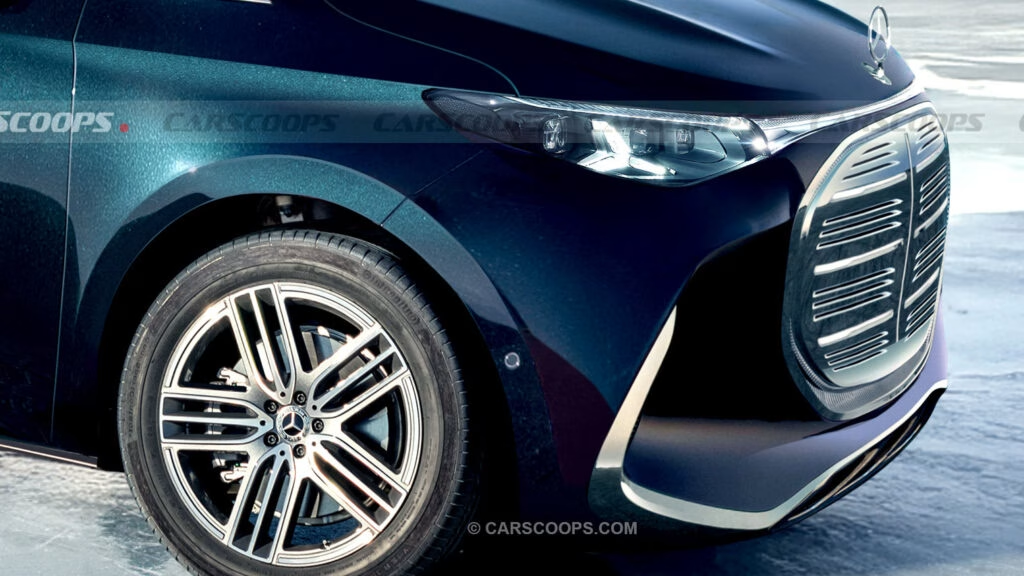What Sets the Mercedes VLE and VLS Electric Vans Apart from the Crowd?
Mercedes-Benz is shaking up the luxury van scene with the upcoming VLE and its ultra-plush sibling, the VLS. These aren’t just electrified versions of old models—they’re a ground-up rethink, built on the new VAN.EA (Van Electric Architecture) platform. Think of the VLE as the spiritual successor to the EQV, while the VLS aims to be the S-Class of minivans. Both are set for a global debut later this year, with launches planned for North America, Europe, and China in early 2026.
So, what’s the big deal? For starters, the VAN.EA platform is modular and battery-first, meaning it was designed from day one to be electric. This results in a flat floor, more interior space, and a lower center of gravity—three things that make a real difference in everyday usability and comfort. Mercedes is clearly betting big on electric vans, and these two models are leading the charge.
How Does the Design Balance Luxury and Practicality?
Let’s be honest: minivans don’t usually turn heads. But Mercedes is out to change that. The VLE’s exterior draws inspiration from the Vision V concept, toning down some of the more polarizing elements but keeping the bold front grille, tri-DRL headlights, and sculpted bumper. From the side, the van’s dynamic profile and pronounced shoulder line help it avoid the boxy, slab-sided look that plagues so many people movers.
At the rear, the halo-style taillight cluster and chamfered tailgate edges give the VLE a three-dimensional, upscale vibe. There’s a nod to the old R-Class in the way the rear quarter glass cascades downward—a subtle touch, but one that hints at Mercedes’ design heritage.
What Can You Expect Inside the Cabin?
Step inside, and it’s clear Mercedes wants the VLE and VLS to feel like rolling lounges. The interior borrows heavily from the Vision V Concept and the EQS sedan, especially with the pillar-to-pillar MBUX Hyperscreen running the latest MB.OS operating system. This isn’t just a pretty face—expect intuitive controls, crisp graphics, and seamless over-the-air updates.
Materials matter, too. Mercedes is leaning into sustainable luxury, with recycled leathers and natural wood veneers. The VLE will offer flexible three-row seating for families or groups, while the VLS dials up the opulence with individual captain’s chairs, lounge-style layouts, and integrated work surfaces—perfect for executives or anyone who wants to travel in style.
Tech-wise, you’re looking at Level 2+ driver assistance (with Level 3 on the horizon), augmented-reality navigation, smart ambient lighting, and 4K rear entertainment screens with streaming built in. Wireless charging pads and a Burmester sound system round out the package. It’s basically a high-end living room on wheels.
How Does the VAN.EA Platform Change the Game?
The VAN.EA platform is the secret sauce here. It’s made up of three core sections—front, center, and rear—allowing Mercedes to build different sizes and specs without reinventing the wheel each time. This modular approach means better efficiency, faster development, and, crucially, more room for passengers and cargo.
Because the platform is built around the battery, you get a completely flat floor. That’s a big deal for comfort and accessibility, especially in a van. Rear-axle steering is another clever touch, making these big vehicles surprisingly nimble in tight spaces. For anyone who’s ever tried to park a minivan in a crowded city, that’s music to the ears.
What’s Under the Hood (or Floor)?
Performance isn’t an afterthought. Entry-level VLEs will come with a rear-mounted motor producing about 268 hp (200 kW), while the dual-motor, all-wheel-drive versions will crank out up to 470 hp (350 kW). That’s serious muscle for a people mover.
Battery options will likely start around 90 kWh and go up to 116 kWh for long-range versions. Mercedes is targeting a WLTP range of over 311 miles (500 km), putting these vans right up there with the best in the segment. Thanks to an 800-volt electrical system, you’ll get fast charging—up to 350 kW DC—plus a 22 kW AC onboard charger. Vehicle-to-grid and bi-directional charging are also expected, which could turn your van into a mobile power bank for your home or campsite.
How Do the VLE and VLS Stack Up Against Rivals?
The luxury electric van space is heating up, especially outside North America. The VLE will go toe-to-toe with the likes of the hybrid Lexus LM, the all-electric Volvo EM90, and the Zeekr 009 in China. In the U.S., options are thinner, but the Volkswagen ID. Buzz LWB could be a fun, if less luxurious, alternative.
Mercedes is clearly aiming higher, especially with the VLS. By offering S-Class levels of comfort and tech in a van, they’re targeting a niche audience—think business executives, VIP shuttles, or families who want the best of everything.
When Can You Get Your Hands on One?
The official unveiling of the VLE and VLS is just around the corner, with full launches set for early 2026. Prototypes have already been spotted testing in the Arctic Circle, so Mercedes is well into the final stretch. Expect more details on pricing, trims, and exact specs as the debut approaches.
The big takeaway? The new Mercedes VLE and VLS aren’t about perfection—they’re about smarter adjustments. Start with one change this week, and you’ll likely spot the difference by month’s end. Whether you’re after luxury, tech, or just a more comfortable way to move people, these vans are set to raise the bar for what an electric minivan can be.

